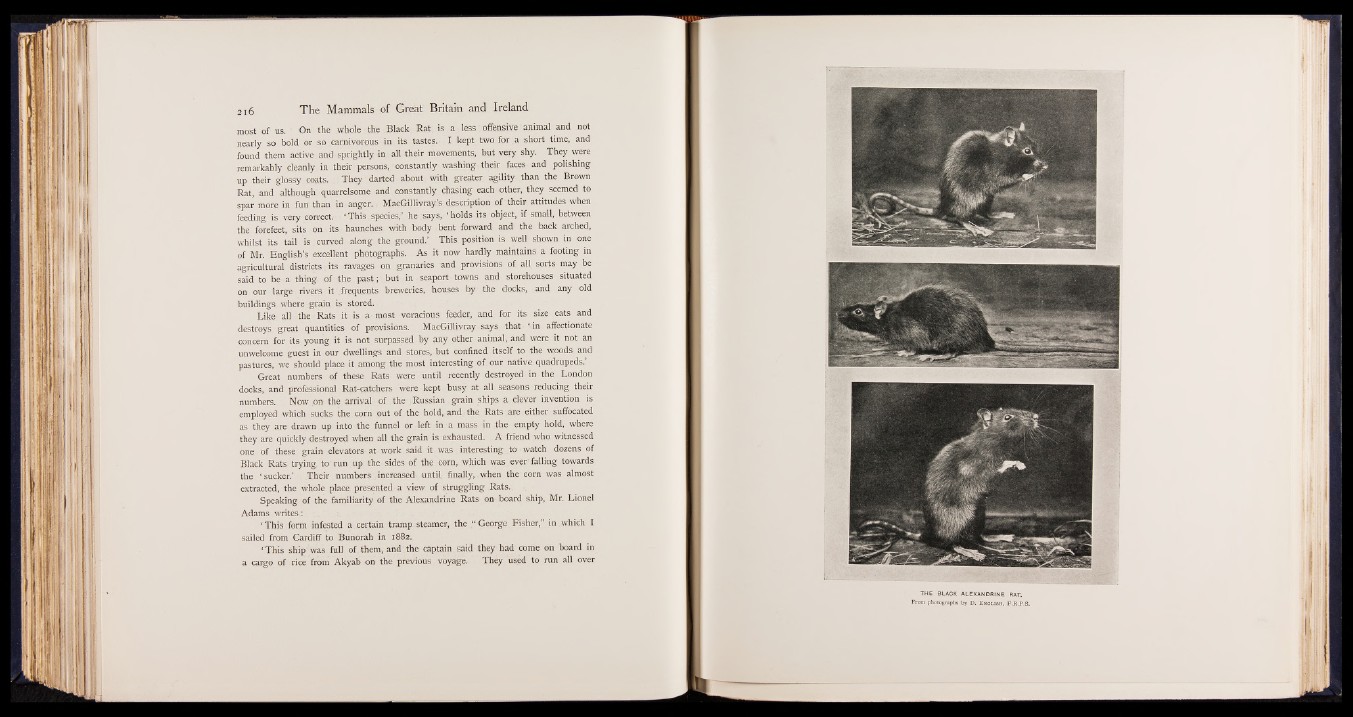
most of us. On the whole the Black Rat, is a le ss ; offensive' animal and not
nearly so bold Or so carnivorous in its tastes.: I kept two fo r, a short time, and
found them active and sprightly in all their movements, but very shy. They were
remarkably cleanly in their persons, constantly washing their faces and polishing
up their glossy coats. . They darted about with greater agility than the Brown
Rat, and although quarrelsome and constantly chasing each other, they seemed to
spar more in fun than in anger. . MacGillivray’s description of their attitudes when
feeding is. very correct; ‘ This.species;’ he says, ‘ holds its object, if small, between
the forefeet, sits on its . haunches with body bent forward and the back arched,
whilst its tail is curved along the ground.’ This position is well shown in one
of Mr. English’s excellent photographs. As it now hardly maintains a footing in
agricultural districts . its ravages on granaries and provisions of. a ll sorts may be
said to be a thing of the past; ' but in - seaport towns and storehouses situated
on our large rivers it frequents breweries, houses by the docks, and any old
buildings where grain is stored. ,
Like all the Rats i t . is a most voracious feeder, and. for its size eats and
destroys great quantities of provisions.; MacGillivray says that- Sin affectionate
concern for its young it is not surpassed by any other animal, and were it not an
unwelcome guest in our dwellings and stores, but confined itself to the woods and
pastures, we should place it among the most interesting of our native quadrupeds.’
Great numbers of these Rats were until recently destroyed in the London
docks, and professional Rat-catchers were kept busy at all seasons reducing their
numbers. Now on the arrival of the Russian grain ships a clever invention is
employed which sucks the corn out of the hold, and the Rats are . either suffocated
as they are drawn , up into the funnel or left in a mass in the empty hold, where
they are quickly destroyed when all the grain is exhausted. A friend who witnessed
one of these, grain elevators • at work said it was interesting. to • watch dozens of
Black Rats trying, to' run up the sides of the corn, which was ever falling towards
the ‘ sucker.’ Their numbers increased- until, finally, when the corn was almost
extracted, the whole place presented a view of struggling Rats.:
Speaking of the familiarity of the Alexandrine Rats on board ship, Mr. Lionel
Adams writes.:;
‘ This form infested a certain tramp steamer, the “ George Fisher,” in which I
sailed from Cardiff to Bunorah in 1882.
‘ This ship was full of them, and the captain said they had come on board in
a cargo of rice from Akyab on the previous voyage. They used to run all over
THE BLACK ALEXANDRINE RAT.
From photographs by D. EnglishI. F.R.P.S.